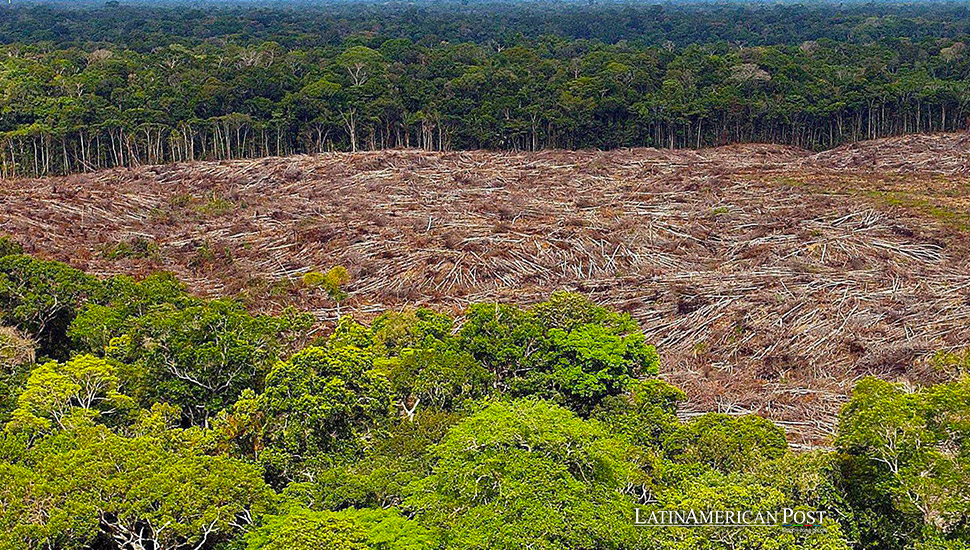Brazil Has Lost a Third of its Natural Areas

Brazil will lose 33% of its natural areas by 2023, with Amazon being the most severely impacted. This ongoing degradation highlights the urgent need for sustainable solutions to protect the country’s critical ecosystems and combat climate change.
Brazil, a country globally recognized for its vast and diverse ecosystems, has seen a dramatic decline in its natural areas over the past several decades. A recent study by the scientific platform Mapbiomas revealed that by 2023, the country had lost 33% of its natural landscapes, a staggering figure that underscores Brazil’s environmental challenges today. This loss is particularly alarming in the Amazon rainforest, the largest tropical forest in the world, which has suffered the most significant damage.
According to the study, which analyzed satellite images from 1985 to 2023, the Amazon has lost 55 million hectares of its natural area—equivalent to a 14% reduction. The degradation of the Amazon, often referred to as the “lungs of the Earth,” is a national and global issue, as this forest plays a crucial role in regulating the planet’s climate. Reducing such a critical ecosystem pushes it closer to the tipping point, where its ability to function as a carbon sink could be irreversibly damaged.
The Amazon: Approaching a Dangerous Threshold
The Amazon rainforest is one of the most biodiverse regions on the planet, home to countless species of plants, animals, and microorganisms. Its vast forests are also essential in mitigating climate change by absorbing significant amounts of carbon dioxide. However, the Mapbiomas study reveals that as of 2023, only 81% of the Amazon’s territory remains covered by forests and native vegetation. This figure is dangerously close to the 75-80% threshold scientists warn could lead to the Amazon’s transformation into a savanna-like ecosystem.
This transformation would have dire consequences for Brazil and the entire planet. The loss of the Amazon’s ability to sequester carbon would accelerate global warming, disrupt weather patterns, and lead to the extinction of countless species. The indigenous communities that have lived in harmony with the Amazon for centuries would also face the loss of their homes and livelihoods as the forest they depend on continues to disappear.

The Wider Impact on Brazil’s Biomes
While the Amazon has drawn the most attention, it is not the only Brazilian biome facing significant challenges. The Cerrado, Brazil’s vast tropical savanna, has also seen considerable losses. The Cerrado, which plays a crucial role in supporting Brazil’s major river systems, has lost 38 million hectares of its natural area—a reduction of 27%. The decline of this biome has severe implications for water security across the country, affecting agriculture, energy production, and urban water supplies.
The Pantanal, the world’s largest tropical wetland, has also experienced a dramatic reduction in its natural area. The study found that the Pantanal’s water-covered areas decreased from 21% in 1985 to 4% in 2023. This loss threatens the region’s unique biodiversity and ability to regulate water flow, which is essential in preventing floods and droughts.
Other biomes, such as the Caatinga, Atlantic Forest, and Pampa, have also suffered significant losses. The Caatinga, a semi-arid region, has lost 8.6 million hectares of its natural area. In contrast, the Atlantic Forest, one of the most biodiverse regions on Earth, saw a decrease of 3.7 million hectares. The Pampa, a grassland biome in southern Brazil, has lost 3.3 million hectares, representing a 28% reduction.
The Drivers of Environmental Degradation
The Mapbiomas study identifies the expansion and transformation of land use as the primary drivers behind the degradation of Brazil’s natural areas. Over the past 39 years, the country has seen a significant increase in land dedicated to agriculture and livestock, often at the expense of forests, wetlands, and other natural landscapes.
The area used for cattle ranching in Brazil expanded by 79% between 1985 and 2023, while the land for crops grew by 228%. This transformation is driven by the global demand for commodities like beef and soybeans, which has led to widespread deforestation in the Amazon and other biomes. Converting these natural areas into agricultural land contributes to biodiversity loss and exacerbates climate change by releasing stored carbon into the atmosphere.
Tasso Azevedo, the general coordinator of Mapbiomas, emphasized that the loss of natural areas increases climate risks by reducing the protective effects these landscapes provide during extreme weather events. Forests and wetlands play a crucial role in mitigating the impacts of floods, droughts, and storms by regulating water flow and acting as natural buffers. As these ecosystems are destroyed, Brazil becomes more vulnerable to increasing frequency and intensity of climate-related disasters.
Urgent Need for Sustainable Land-Use Practices
The findings of the Mapbiomas study underscore the urgent need for Brazil to adopt sustainable land-use practices that balance economic development with environmental conservation. The continued loss of natural areas threatens Brazil’s rich biodiversity and undermines its ability to meet international climate commitments and protect the well-being of its population.
Efforts to curb deforestation and restore degraded landscapes must be prioritized, particularly in the Amazon and other critical biomes. This includes strengthening the enforcement of environmental laws, promoting sustainable agricultural practices, and supporting reforestation and conservation initiatives. Additionally, more significant investment in research and monitoring is needed to understand the impacts of land-use changes better and develop more effective strategies for managing Brazil’s natural resources.
International cooperation and support are also crucial in addressing Brazil’s environmental challenges. The Amazon, in particular, is a global public good, and its protection requires a concerted effort from the international community. This includes providing financial and technical assistance to help Brazil transition to a more sustainable development model and addressing the global demand for commodities that drive deforestation.
Also read: Raging Fires Threaten Brazil’s Pantanal Wetlands
The Mapbiomas study serves as a stark reminder of Brazil’s environmental challenges and the urgent need for action to protect the country’s natural heritage. The continued degradation of Brazil’s biomes threatens the planet’s largest tropical rainforest and other critical ecosystems. It poses significant risks to the global climate and the well-being of future generations. Brazil and the international community must work together to safeguard these vital natural areas and ensure a sustainable future for all.





